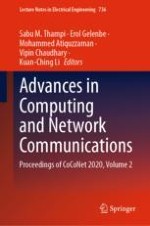2021 | OriginalPaper | Chapter
Diverting Tantrum Behavior Using Percussion Instrument on Autistic Spectrum Disorders
Authors : Zefanya Lintang, Djohan, Fortunata Tyasrinestu, Phakkharawat Sittiprapaporn
Published in: Advances in Computing and Network Communications
Publisher: Springer Singapore
Activate our intelligent search to find suitable subject content or patents.
Select sections of text to find matching patents with Artificial Intelligence. powered by
Select sections of text to find additional relevant content using AI-assisted search. powered by
